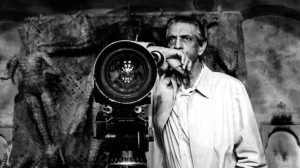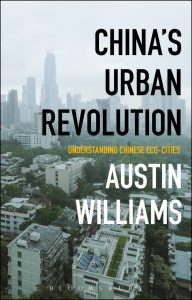Film Review ‘The Big City’
 Martin Earnshaw | 25 January 2015
Martin Earnshaw | 25 January 2015
The Big City (1963), directed by Satyajit Ray, is essentially a story of modernity. The superb opening scene traces the passage of a tram cable as it winds its way through Calcutta, a city which in the 1950s and 60s could be considered as India’s foremost modern city. Although this old Imperial Capital was soon to be eclipsed by Mumbai, at that moment, to be at the forefront of change was to be in Calcutta.
A notable feature of the city was its large, educated, middle-class, a legacy of British colonialism. As well as elite intellectuals and artists, such as Ray himself – Ray was a writer, composer, editor and artist – Calcutta’s middle class contained a more humble administrative or entrepreneurial sector. In The Big City, we follow the family of one member of the lower middle class. The family is educated but still bound by somewhat old fashioned social conventions. Subrata is a bank clerk and the son of a school teacher. He doesn’t earn enough money at the start-up bank where he works to support his extended family that live with him in a small apartment. Neither is his salaried position very stable, as is evidenced when his bank eventually collapses.
At the heart of the story is Subrata’s wife Arati. To help support her family she decides to get a job at a time when it was still considered shaming for married women to work. While virtually everybody in the family – especially her traditionalist in-laws – opposes Arati working, she nevertheless pushes ahead when economic necessity requires it.
It is this singular woman’s decision to make her own way in the world that transforms the image of the city within this film. Ray had always shown the city as a bustling place with a keen eye for detail; the modernity of the city as evidenced by the tramways, the colonial architecture, businessmen in suits mixing with old men in traditional dress, the sounds of the street faintly heard even in the domestic scenes. However, in the opening sequence where Subrata heads home from work, the city is depicted in a rather alienating way; Subrata vacating his place on the tram only for it to be taken by an identically suited man, then on his short walk back home, Subrata trying to distance himself from the general chaos. It is as we witness Arati’s transition from nervous housewife unsure even about signing an application form to a confident young woman about town that we come to see the city as a place of opportunity and as a leveller of social difference.
One of the social divisions is an enduring attachment to place and ethnicity. The majority Bengalis have continued to cling to their village loyalties while Anglo-Indians (of mixed British-Indian ancestry) formed their own Anglophone cultural enclaves. It is her friendship with Anglo-Indian colleague Edith that helps expand Arati’s horizons, introducing her to such fashions as lipstick and sunglasses. Edith’s role in the film, however, is more ambiguous. Confident, if perhaps a little brash and even arrogant, Edith represents the modern West and is clearly disliked by her Bengali boss Mr Mukherjee, a man who finds even the mild mannered Arati a little too impulsive.
Events take a decisive turn as Subrata reacts to his sense of emasculation by his wife’s success. Feeling humiliated by her usurpation of the breadwinner status, and suspicious that she will leave him for another man, Subrata visits Mukherjee to check his trustworthiness. However, upon discovering they are from the same village, Mukherjee attempts to secure Subrata work. On the other hand, Mukherjee less hospitable to “that Anglo-Indian” Edith who he fires on trumped up charges so he can bring Arati, a Bengali, in to do her job. Disgusted by events, Arati places principle before hardship and quits the job.
Cut adrift, with neither Subrata nor Arati working, the film ends with the couple realising that actually there is no limit to the amount of careers that are available within the city. In that moment they have overcome their narrow traditions to embrace the possibilities of the city and its uncertainties. The fact that this family could be on the verge of ruin doesn’t stop the final message being one about hope and transformation.
Today, Calcutta is just another provincial city, its parochialism underscored by the recent name change to the more Bengali sounding Kolkata. But Ray’s film stands up as a universal story of developing cities; the changes in the urban landscape also play out in the lives and changed horizons of the people who migrate to them.
The Big City is available to download at Amazon Instant Video
Martin Earnshaw is the Chair of the Future Cities Project Readers Group






